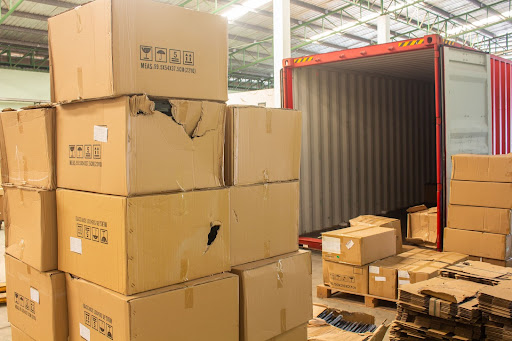Have concealed damages become a frustrating occurrence for you as of late? Unsure of how to file concealed damage claims? Not even sure what concealed damage claims are?
If you are in that third group, consider yourself lucky. As anyone who has had to file concealed damage claims before will tell you, the entire process is frustrating.
That frustration is why the team over at R2 Logistics created this guide. Below, we recap what concealed damage claims are, why they are so tedious to file, and what steps you should follow when filing.
Concealed Damage Meaning
According to the United States General Services Administration website, the term “concealed damage” refers to “damage or shortage” that is found after the delivery crew has left and an order is opened.
The damage or shortage is considered concealed because it was not immediately visible until the order was either removed from the pallet or opened/unwrapped. Concealed damage can take many forms. The most obvious is when machinery or other components are clearly broken or damaged.
However, as noted in the GSA’s definition, shortages also fall under the umbrella of “concealed damage.”
A shortage is simply an insufficient quantity of an ordered material or product. Let’s say that you order 50 boxes, each of which is supposed to contain 10 of the same product. If all 50 boxes are present, but you later find that five of the boxes only contain eight items each, then this would be considered to be a concealed shortage.
Why Concealed Damage Claims Can Be a Headache
Typically, when filing a concealed damage claim, all parties that handled the product before it was delivered to you begin pointing fingers at one another. This accusatory approach is adopted for two reasons.
First, no one wants to accept responsibility for damaging or shorting your order. More importantly, none of these entities want to be financially responsible for correcting the issue.
The truck driver will likely blame the loading crew at the pickup location. The loading staff will point fingers at the fulfillment team or the distribution center. Likewise, the distribution center will potentially blame the original shipper or manufacturer.
It can be extremely difficult to determine who actually caused the damage or shortage. As a result, it can take weeks to get the error corrected. In some instances, you might have to absorb the financial burden yourself.
Are Concealed Damage Claims Preventable?

Due to the nature of concealed damage claims, these issues are not very easy to prevent. You can reduce the frequency of concealed damage claims by quickly inspecting incoming shipments before the drivers leave. However, your crew will likely not have enough time to open every box and inventory the contents.
Fortunately, you can make concealed damage claims easier to navigate by purchasing comprehensive cargo insurance.
This insurance provides all-risk coverage and offers a streamlined claims process when compared to traditional motor carrier coverage. Additionally, the insurer will handle the entire process on your behalf once you initiate the claim.
What to Do When You Need to File a Claim
When it comes to concealed damage claims, the sooner you file, the better. While inspecting freight upon delivery may not be the most efficient way to manage incoming shipments, it is the best method of protecting yourself.
Should you discover damage, take plenty of photographs from multiple angles. Also, make sure to communicate directly with your third-party logistics provider, as they can help you navigate the claims process.
If you would like to learn more about the shipping and logistics industry, check out additional R2 Logistics blogs, like What Is LTL Freight Shipping?
To streamline your supply chain management capabilities, we invite you to contact our team. We are an award-winning 3PL provider that partners with shippers of all sizes.
